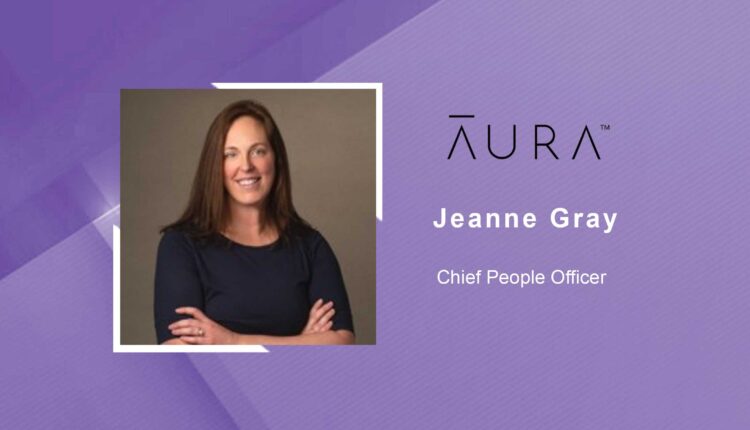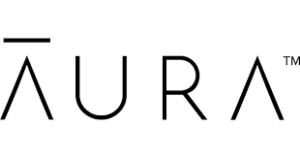With Covid-19 causing shifts in the way organizations approach daily work and streamline their talent management processes, 2020 has been a year of constant learning for most. Jeanne Gray, Chief People Officer at Aura dives into her people practices and processes while talking about her journey through HR…
____
Tell us a little about yourself Jeanne…and your journey in recruitment. We’d love to hear about your day at work at Aura?
Thanks for the opportunity to share my story! I got my first taste of recruiting as a college basketball recruit. I was fascinated by the recruitment process, how coaching staffs marketed the opportunity to play at their school while also carefully assessing my talents, weaknesses and character. After many (many!) years have passed, I still remember how each campus visit made me feel – I think of this when our People Operations team emphasizes the importance of the candidate experience in the hiring process.
HR Technology: The Reality Of Being Childfree In The Workplace
After college, I sort of “fell into” People Operations, beginning in the search firm world and then transitioning into in-house recruitment. Along the way, mentors gave me the chance to try out almost everything in the field – from Talent Acquisition to Talent Management, and subsequently into HR Business Consulting and leadership. This experiential learning prepared me to lead the People function at a global healthcare data and insights provider for a few years prior to coming to Aura in May of 2019.
At Aura, there is no typical day at work… and I love it that way! With over $200MM in revenue and more than 500 employees globally, we’re no “startup” in the traditional definition of the word. However, to many of us at Aura, we feel the startup “buzz” of creating something that doesn’t exist today in the cyber wellness space. Right now, I’m focused on post-merger cultural integration and collaboration, transforming our organizational and talent strategies to align with our future vision, and partnering with our new CMO and CRO as we grow their teams. My current favorite project is leading the design of a “Future of Work at Aura” plan that will support employees’ ability to work from “wherever, whenever” in an asynchronous environment.
What are some of the biggest best practices you’ve followed while building on core processes and initiatives for employee-friendly cultures during your time and more specifically at Aura?
There’s so much great content on culture that’s easily accessible nowadays – dating back to Netflix’s Culture Deck, focused on shaping a culture and motivating performance, to HubSpot’s continuously-updated “Culture Code”, which uses relatable and simple language to share their set of shared beliefs, values and practices.
The single most important best practice we subscribe to at Aura is resisting the urge to “copy and paste” one of the successful examples of culture into our organization. My 7-year old son likes to remind me of Oscar Wilde’s quote: “Be yourself; everyone else is already taken.” Good organizational cultures are no different. Know who you are – and sometimes more importantly, know who you aren’t striving to be and be deliberate about what the outcomes might look like. For instance, we prioritize speed over perfection at Aura. We know this means we have a lot of “work in progress” on our slides and plans – and that’s OK.
We’d love to dive into a few of your thoughts on the changing role of the typical HR executive today, how according to you will a typical HR head in the future of tech need to shape up to be? Seeing how technology is enabling HR in many ways, we’d love your thoughts on the influence on HR Tech on HR today.
HR Leaders in Tech need to lean in on recruitment and talent management. Even in these unique times with the Covid-19 pandemic, attracting and keeping top tech talent remains challenging.
On the HR Tech side, we’ve seen an impressive step change in the past 15 years with technology like Workday enabling HR and Finance to work together off the same platform. Going forward, the best HR Tech will not only focus on enabling corporate support functions, but also on supporting line managers and leaders with their talent strategies. Said differently, the best HR Tech will think of people managers as their “buyer” – and strong HR leaders will look at this technology as an extension of their own teams.
What are some of the HR technologies you have always included as part of your stack to enable your plans/ strategies?
At Aura, we’re focusing on helping employees to collaborate across time zones and work around personal commitments like helping with home schooling or taking care of a sick family member. I’ve found Loom to be a lifesaver; it allows you to record a video and/or screen and send it to a colleague. I used it this month to give our Board of Directors a video version of our People Operations quarterly update and was able to cover a long e-mail’s worth of information within a 3-minute video. It’s also useful for managers who want to send a more personalized outreach to the team, or to provide the “why” or context behind what the team is working on.
For onboarding with “personality”, we’ve used Donut (Slack app) to help automate a personalized onboarding experience outside of forms and policies. Joining a new organization (especially during a pandemic) can feel overwhelming, so we break down the steps across the new hire’s first year experience… and even add in a bit of humor or a GIF.
In order to create a candid culture, I’m a huge fan of easy, frequent pulse checks where the results and comments are shared broadly. I’ve used TINYpulse in the past to interact with employees who wished to remain anonymous. I like that the tool allowed the People Operations team to clarify the feedback provided – something that you lose with a typical anonymous survey which is typically just one round of responses. Once a question was resolved, I could post it to the company’s “wall” so that others could read the response.
HR Technology: Listen. Act. Repeat: How Leaders Can Provide A Modern-Day Employee Experience
As companies focus more on creating valuable digital experiences for both, their employees and customers today, how are you seeing businesses realign models to help support this?
The role of experience engineers – those architecting the customer and/or employee journey – rightfully has more of a voice than ever. This is especially true for UI/UX designers. At some organizations, this function reports to the CPO or CTO, who reports into the CEO. At Aura, our CEO Hari Ravichandran works closely with our design team to make sure the experience we’re designing at Aura is simple, easy to use, and aesthetically pleasing.
As employees return to the workplace during the pandemic and businesses try to return to a sense of pre-Covid normalcy, how according to you should business leaders focus on implementing better organizational practices in a Covid-19 working era.
Business and HR leaders have a great challenge ahead, especially as many physical offices reopen. The data we’re seeing across most organizations is that people want a hybrid schedule and the future of work is employee choice. Enabling the organization to be strong at both onsite working and remote working is not easy. Right now, many tech companies are a completely remote and distributed workforce. In a lot of ways, that’s an easier culture to mold because everyone’s on an even playing field and communicating over the same tools. In a hybrid environment, we’ll need to be more intentional about communication, inclusion and culture when some employees are co-located with their managers, colleagues and stakeholders while others aren’t.
We also need to be intentional about career development. Adults obtain 70 percent of their knowledge from job-related experiences, 20 percent from interactions with others, and 10 percent from formal educational events. In the Covid-19 working era, we need to be more intentional about organizational practices that give people a chance to learn through on-the-job experiences and by interacting with and observing others.
What are some of the ways in which you feel HR leaders should drive more change within their organization (in terms of workplace culture, benefits, hiring process, etc) today?
Strive for progress over harmony. For many HR leaders, we measure our success by increased employee engagement scores, reduced attrition, time needed to fill open roles, etc. There’s a lot to be said for having one metric by which you measure success – growth. Simplicity in measurement keeps everyone focused on a common goal. Subsequent decisions like culture, benefits, hiring, etc. become much easier when there’s one common growth goal overarching everything else.
Before we wrap up, we’d love to hear a little about the employee culture and experience at Aura?
At Aura, we are a culture focused on results, learning, and our greater purpose to protect our consumers as they live their lives online. Our amazing people – we call them “Aura All-Stars” – are the most customer-centric colleagues I’ve ever had the privilege to work alongside.
HR Technology: TecHRseries Interview with Cyril De Queral, CEO at Powell Software
Bringing a culture to life is easier said than done and everyone plays a part; here are a few ways we’re bringing each cultural tenet to life:
Results: Being a SaaS business, we share out company metrics in biweekly all-company standups led by our CEO, Hari Ravichandran. Hari is incredibly transparent; he discusses the same data with employees that we discuss as a management team. We also set quarterly OKRs, which flow into quarterly goal and coaching check-ins for all employees. These check-ins are owned and driven by employees, supported by their managers, and facilitated by the People Operations team.
Learning: We look to hire people that are humble, hungry, and smart. Learning is central to all three of those qualities. If someone has the knowledge, willingness, and humility to be a lifelong learner, then it’s likely that person will have a successful career at Aura. We back up the importance of learning with dedicated learning hours. By the end of the year, more than 5,000 hours will have been dedicated to learning. We meet nearly weekly to learn about our products, tech stack, and even fun things like how to solve a Rubik’s cube or properly taste wine. During the beginning of the pandemic, we offered some timely advice from guest experts on things like homeschooling tips and even how to dye your hair at home. Learning doesn’t always have to be related to the box you sit in on the org chart!
Purpose: We have a common bond at Aura as it relates to wanting to make a difference in the lives of our customers and our communities in which we live. We kick off many company meetings by listening to a recorded customer call. We also have an “Aura Cares” team, which is entirely employee led. This team does a phenomenal job helping us give time, money and resources to our communities.
Jeanne is the Chief People Officer at Aura
Catch how these experts from leading tech companies like TeamViewer, JotForm, Xactly and more are boosting their B2B sales and marketing experience while focusing on a balanced employee culture:


